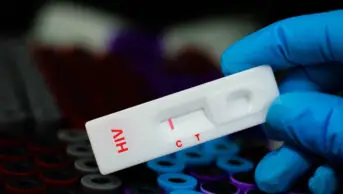I was working this weekend in a tertiary-centre’s outpatient pharmacy service. A patient arrived with a prescription that read ‘Tinzaparin 2,500 units, supply FIVE’. The patient explained as she handed the prescription in that she knew the doctor hadn’t filled the prescription out properly but that she knew how to use the medicine and that she wouldn’t be able dialyse without it, because she’d clot straight away. She confirmed she needed 0.25ml syringes and used the whole syringe to dialyse. I knew that Tinzaprin could be used in this way from when I shadowed a renal consultant in a clinic during my pre-registration in hospital. The only reason she’d had to come to A&E was because she had been on holiday and miscalculated how many she had left. After getting a few more details from the patient, which I can’t share for confidentiality reasons, I decided that it was in the patients best interest to make the supply without more clinical information from the prescriber.
This decision probably sits in that grey area of the law that tries to allocate responsibility in relation to the clinically appropriate supply of medicines. Arguably the laws governing this sort of thing are built on the foundations of an age were medicines were few and far between and the public were not as aware, empowered or engaged with their own health. From a legal perspective, I had a signature, it was in date, I had the patient’s details and the prescribers details (although these were somewhat illegible). From a clinical perspective, I wasn’t entirely satisfied that the prescriber knew what they were prescribing – something I’m sure many pharmacists are familiar with! There was no real product prescribed, no real quantity (a pre-printed ‘Two weeks’ appears at the bottom’ and no real dose and certainly no indication. In terms of clinical responsibility, pharmacists often supply medicines on prescriptions without knowing what the medicine is being used for but are still able to check it is clinically appropriate. From my experience with community colleagues of a large pharmacy chain, it’s usually a ‘best guess’ scenario.
I could have spent an hour on the phone, bleeping, back and forth, with A&E junior doctors, registrars, consultants, nurse prescribers and the like but is that in the patient’s best interest? She’d been here for a good few hours already and was quite anxious about getting home. Trying to understand it from the prescribers point of view, had they wrote so little on the prescription because they were busy and had 10 other patients so see, or were they purposefully trying to hide their own ignorance? I’d like to think that the prescriber was putting trust in their pharmacy colleagues to know what to do and act accordingly. After all, I’m a registered healthcare professional too; I’m (potentially) equally or more qualified and have my own professional autonomy to make decisions. But as the outpatient pharmacy and A&E departments are about a 20-minute walk away from each other, we will never really know.
I explained all of this to the patient. She was grateful that I had the autonomy to supply the medicines without her having to spend more time waiting, but reflecting on this, I wondered how many of my colleagues would have made the same decision…


